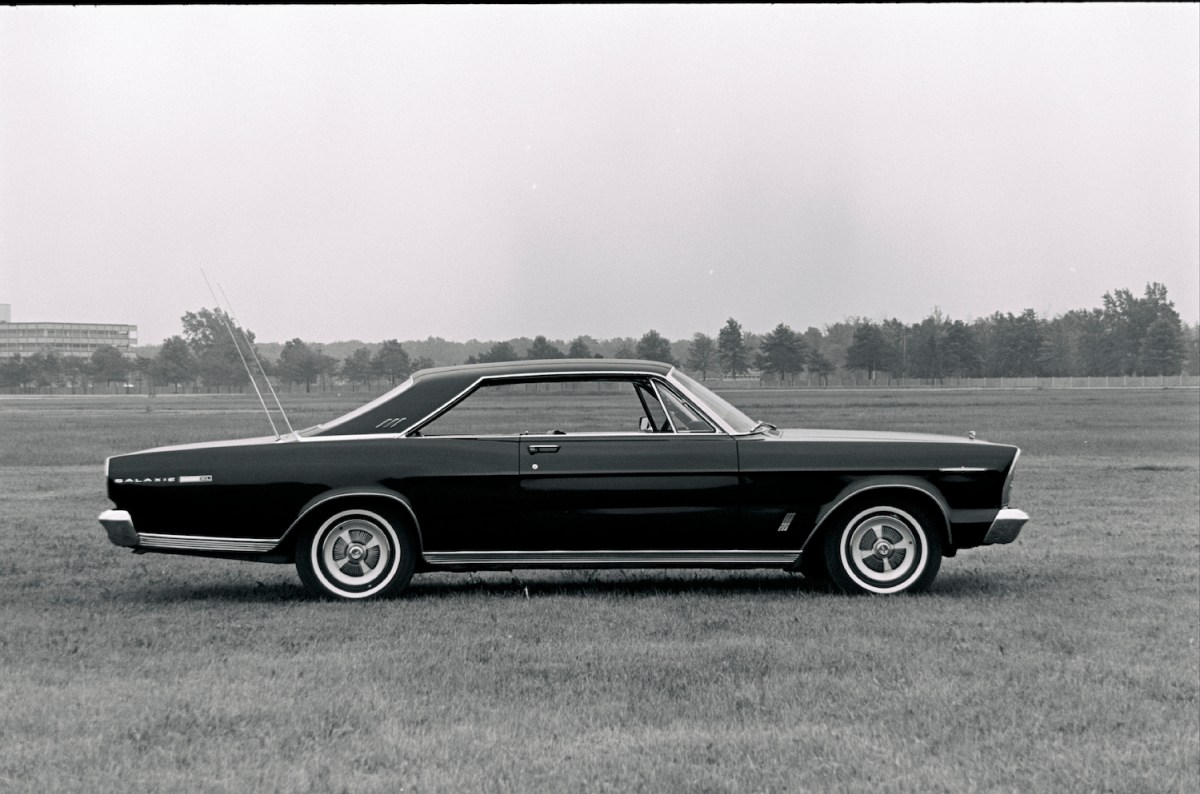
Did the Ford Galaxie 500 Reach Muscle Car Status?
Contrary to popular belief, not every American car out of the 1950s, ‘60s, or even out of the ‘70s was a muscle car. Most cars out of that era weren’t muscle cars. Pontiac GTOs and Dodge Chargers donned the muscle car moniker with aplomb, but the Mustangs and Camaros were technically pony cars. The Buick Riviera and Oldsmobile Tornado were personal luxury cars. You could throw the Ford Galaxie 500 into that mix as well. However, Its stature as a full-size land yacht didn’t stop Ford from trying to give it a workout. Was the Ford Galaxie 500 a muscle car?
Why are we questioning the Ford Galaxie 500’s status?
To some, it might seem obvious. Ford’s Galaxie name started as a footnote on the back of the Fairlane. The Ford Galaxie got its own car in 1960, and customers could choose from a flurry of V8s and one inline-six. Ford built the Galaxie as a two and four-door hardtop, sedan, and convertible. Considering the Ford Galaxie’s curb weight, the only proper engine choice was the 352 V8, making 300 horsepower.
The Ford Galaxie lasted until 1974, evolving under whatever styling was popular for its time. The 1960s saw a distinct departure from its genesis model, sporting harsh lines, intimidating front grilles, and aggressive headlights. Engine sizes went to the moon, with the 428 (7.0-liter) V8 pushing 345 horsepower to the rear wheels. The Galaxie was comfortable as a cloud with a 4-link coil suspension at the rear and McPherson suspension at the front.
Did the Galaxie ever come close to being a muscle car?

The Ford Galaxie was never a muscle car. It was always a mid-range, full-size car that was comfortable and glided along the road like a C47. That said, for one year, Ford tried to wake the Galaxie up from its slumber and give it some juice. For the 1966 model year, Ford decided to use the Galaxie to showcase its new monster 428 V8.
The Ford Galaxie got a fastback body, bucket seats, dual exhaust, disc brakes, and a more robust automatic or manual transmission to go along with its 345-hp powerplant. Atop the engine was a single four-barrel carburetor from Ford and inside rumbled 10.5:1 compression. There was also an 11:1 compression ratio available with solid lifters, according to Hemmings.
Called the Ford Galaxie 500 7-Litre, it also got stiffer suspension, including sway bars and lower control arms. In the traditional sense, it wasn’t technically a muscle car, but it was about as close as the Galaxie ever came.
The Galaxie enjoyed a little success in motor racing

Though it was never really a muscle car, the Ford Galaxie reveled in some motor racing success. The 1963 R-Code Galaxie used a 427 with dual carburetors producing 425 horsepower, one of the most powerful Fords ever made. They got 4-speed manual transmissions, a 4.11:1 axle ratio, and beefy suspension. Ford swapped steel body panels for fiberglass, and the transmission got an aluminum bell housing. The Galaxie was too heavy to find success in America, but it found victory in the British Saloon Car Championship at the hands of Jack Sears. After some modifications, the Galaxie R-Code Lightweight won multiple races and eventually the championship.
Not cool like a Pontiac GTO; cool like a Ford Galaxie 500
The Ford Galaxie commanded its version of cool, though its history wasn’t always showered with sunshine and roses. Rather than be the “next GTO”, it became the “first Galaxie”. Conventional muscle cars are remarkable in their own right, but full-size sedans redefine the word when they step up to compete as the Ford Galaxie did.


